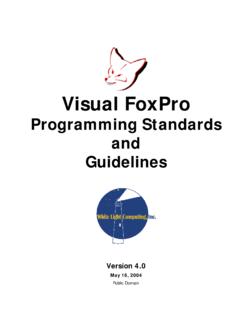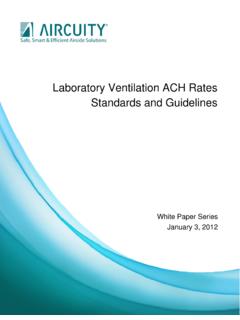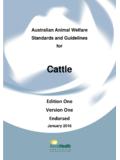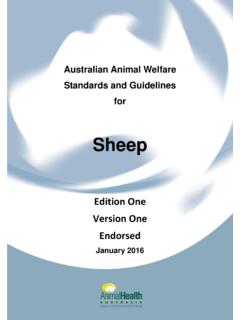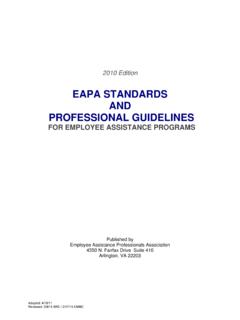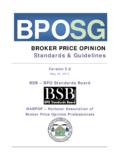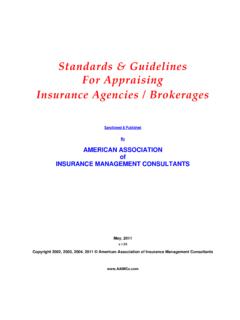Transcription of Guidelines for Standards of Care in Animal Shelters
1 / i V > v - i i 6i i > > U Guidelines for Standards of Care in Animal SheltersAuthors:Sandra Newbury, Mary K. Blinn, Philip A. Bushby, Cynthia Barker Cox, Julie D. Dinnage, Brenda Griffin, Kate F. Hurley, Natalie Isaza, Wes Jones, Lila Miller, Jeanette O Quin, Gary J. Patronek, Martha Smith-Blackmore, Miranda Spindel Association of Shelter VeterinariansTMGuidelines for Standards of Care in Animal SheltersAssociation of Shelter VeterinariansTMiSandra Newbury, DVM, Chair, EditorKoret Shelter Medicine Program, Center for Companion Animal Health, University of California Davis, Davis, Assistant Professor of Shelter Animal Medicine, Department of Pathobiological Sciences, University of Wisconsin-School of Veterinary Medicine, Madison, K. Blinn, DVMS helter Veterinarian, Charlotte/Mecklenburg Animal Care and Control, Charlotte, North A. Bushby, DVM, MS, DACVSM arcia Lane Endowed Professor of Humane Ethics and Animal Welfare, College of Veterinary Medicine, Mississippi State University, Mississippi State, Barker Cox, DVMHead Shelter Veterinarian, Massachusetts Society for the Prevention of Cruelty to Animals, Boston, D.
2 Dinnage, DVME xecutive Director, Association of Shelter Veterinarians, Scottsdale, Griffin, DVM, MS, DACVIMA djunct Associate Professor of Shelter Medicine, College of Veterinary Medicine, University of Florida, Gainesville, Florida. Kate F. Hurley, DVM, MPVMK oret Shelter Medicine Program, Center for Companion Animal Health, University of California Davis, Davis, Isaza, DVMC linical Assistant Professor, Merial Shelter Medicine Clerkship, College of Veterinary Medicine, University of Florida, Gainesville, Jones, DVMS helter Veterinarian, Napa Humane, Napa, Miller, DVM, EditorVice-President, Veterinary Advisor, ASPCA, New Assistant Professor, Cornell University College of Veterinary Medicine, Ithaca, New York. University of Pennsylvania School of Veterinary Medicine, Philadelphia, O Quin, DVMP ublic Health Veterinarian, Ohio Department of Health, Zoonotic Disease Program, Columbus, J. Patronek, VMD, PhD, EditorVice President for Animal Welfare and New Program Development, Animal Rescue League of Boston, Boston, Assistant Professor, Cummings School of Veterinary Medicine at Tufts, North Grafton, Smith-Blackmore, DVM, EditorDirector of Veterinary Medical Services, Animal Rescue League of Boston, Boston, , Tufts Center for Animals and Public Assistant Professor, Cummings School of Veterinary Medicine at Tufts, North Grafton, Spindel, DVM, MSDirector of Veterinary Outreach, ASPCA, Fort Collins, i V > v - i i 6i i > > U Guidelines for Standards of Care in Animal SheltersiiForewordvIntroduction 1 Background 2 1.
3 Challenges to Ensuring Welfare 2 2. The Need for Standards 3 3. The Five Freedoms and Companion Animals 4 How to Use This Document 5 Management and Record Keeping 6 1. Establishment of Policies and Protocols 6 2. Management Structure 6 3. Training6 4. Animal Identification and Record Keeping6 Facility Design and Environment 7 1. Primary Enclosure 7 2. Surfaces and Drainage9 3. Heating Ventilation, and Air Quality9 4. Light10 5. Sound Control11 6. Drop Boxes11 Population Management12 1. Capacity for Care12 2. Protocols for Maintaining Adequate Capacity for Care13 3. Monitoring Statistical Data13 Sanitation14 1. Cleaning and Disinfection14 a) Sanitation Procedures14 b) Fomite Control16 2. Other Cleaning17 3. Rodent/Pest Control 17 Medical Health and Physical Well-being 18 1. Veterinary Relationship and Recordkeeping18 2. Considerations on Intake19 Guidelines for Standards of Care in Animal SheltersTable of contentsiii 3.
4 Vaccinations19 4. Emergency Medical Care20 5. Pain Management20 6. Parasite Control21 7. Monitoring and Daily Rounds21 8. Nutrition22 9. Population Well-being23 10. Response to Disease or Illness23 a) Isolation23 b) Diagnosis24 c) Outbreak Response24 11. Medical Treatment of Shelter Animals24 Behavioral Health and Mental Well-being26 1. Considerations on Intake26 a) Behavioral History26 b) Minimizing Stress 26 2. Behavior Evaluation26 3. In-shelter Care28 a) Environment28 Enclosures28 Separation28 b) Daily Routine28 c) Enrichment and Socialization28 Interactions with People28 Behavioral Considerations for Long-term Shelter Stays29 Other Types of Enrichment30 d) Behavioral Modification30 Group Housing31 1. Risks and Benefits of Group Housing31 2. Facilities31 3. Selection31 4. When Group Housing is Inappropriate32 Table of contentsivAnimal Handling33 1. Restraint33 2. Location and Timing33 3.
5 Equipment33 4. Feral Cats33 Euthanasia34 1. Euthanasia Technique34 a) Carbon monoxide34 b) Verification of Death35 2. Environment and Equipment35 3. Record Keeping and Controlled Substances36 4. Staff Training36 Spaying and neutering37 1. Veterinary Medical Guidelines37 2. Surgery and Anesthesia37 3. Identifying Neutered Animals38 Animal Transport39 1. Responsibilities of Participating Individuals and Organizations39 a) General39 b) Responsibilities at Point of Origin39 c) Responsibilities During Transport40 Primary Enclosure and Occupancy40 Vehicles40 Transporter Responsibilities41 d) Responsibilities at Destination41 Public Health42 1. Zoonoses42 2. Animal -Related Injuries43 3. Emerging Diseases and Anti-microbial Resistance44 Conclusions 45 References46 Glossary of Terms57vForewordWhen the Association of Shelter Veterinarians (ASV) Guidelines for Standards of Care in Animal Shelters (hereinafter referred to as the Guidelines ) were first published, it was anticipated that questions would arise as to why they were developed, how they would be used, and how they would impact the Animal welfare community.
6 The National Federation of Humane Societies (NFHS), the Society of Animal Welfare Administrators (SAWA), the National Animal Control Association (NACA), the American Society for the Prevention of Cruelty to Animals (ASPCA) and the Humane Society of the United States (HSUS)) met with the Association of Shelter Veterinarians (ASV) authors of the Guidelines , to discuss their intentions and goals in publishing this comprehensive document. This Foreword is intended to put the Guidelines into perspective for Animal welfare organizations. It is important to note that each of the organizations listed above and that have co-authored this Foreword embrace the spirit and intent of the Guidelines , both to raise the standard of Animal care throughout our industry and to create a road map that will aid organizations with on-going self-assessment and improvement. We strive for consistency and excellence in the programs and services provided to animals, and we believe that the Guidelines , with their focus on meeting the needs of each individual Animal without losing sight of the needs of the population as a whole, assistance in helping prioritize necessary change, and applicability regardless of type and size of organization, will help every organization achieve these critically important goals.
7 At the time of publication the ASV provided the FAQs summarized below: For the full ASV FAQ s please refer to the ASV Guidelines FAQ s. Why did the ASV develop these Guidelines ? To date, no federal agency or judicial act regulates the welfare and care of companion animals in a shelter environment. The goal of the ASV was to provide information that will help any Animal welfare entity meet the physical, mental and behavioral needs of the animals in their care. The Guidelines were developed to provide a tool that would allow communities and Animal welfare organizations of all sizes, whether a large organization, a small home based effort or something in between as well as communities, to identify minimum Standards of care, as well as best and unacceptable practices. ASV strove to create Animal care Guidelines that could continue to evolve as knowledge increases about the best way to meet the needs of animals in shelter settings.
8 What process was undertaken in developing these Guidelines ? The ASV created a task force to initiate a comprehensive literature review and prepare a well-researched and referenced white paper identifying Standards of care that would meet the needs of animals in Animal welfare organizations. What are the Five Freedoms and why are the Guidelines based on this concept? The foundation of the Guidelines is the Five Freedoms , developed in 1965 in the UK. The ASV believes the Five Freedoms are now recognized to have broad application across species and essentially speak to the fundamental needs of animals that remain constant regardless of setting. Who do the Guidelines apply to? The Guidelines are meant to be applicable to virtually any situation in which care for companion animals is delivered in a group or population setting, including traditional brick and mortar Shelters , sanctuaries and home based foster or rescue networks.
9 How are practices identified as good or bad for a shelter in the Guidelines document? Unacceptable is used to highlight practices that must be corrected as soon as possible to provide an acceptable level of care. A must indicates that without adherence to this recommendation, the delivery of a minimum level of acceptable humane care is not possible. Should implies a strong recommendation. Best practices are identified in the Guidelines as ideal or best. While the authors note that achieving ideal or best practices in every aspect of operations is ultimately preferred, they acknowledge that not every organization is capable of achieving this goal in every circumstance. Therefore, Shelters should strive to meet all ideal practices wherever possible, and should attempt to ensure that they are adhering to all practices identified as a must, while avoiding any practices identified as unacceptable.
10 How quickly should Shelters make changes? While some changes can be made simply and easily, others may require physical changes to a facility, additional training, or more advanced planning. The first step for each organization should be to urgently address and correct any unacceptable practices. Aside from those immediate changes, implementing change based on the Guidelines should be a gradual and thoughtful process designed to provide maximum benefit for the animals. As change is made, careful attention should be given to the goals of maximizing quality of life and life saving capacity. Association of Shelter Veterinarian s Guidelines for Standards of Care in Animal SheltersviWhat will the Guidelines not address? While the Guidelines make recommendations in numerous areas of shelter operations, they are not intended to serve as an operations manual. The right approach for implementing the Guidelines will vary by organization depending on their particular resources and challenges.
